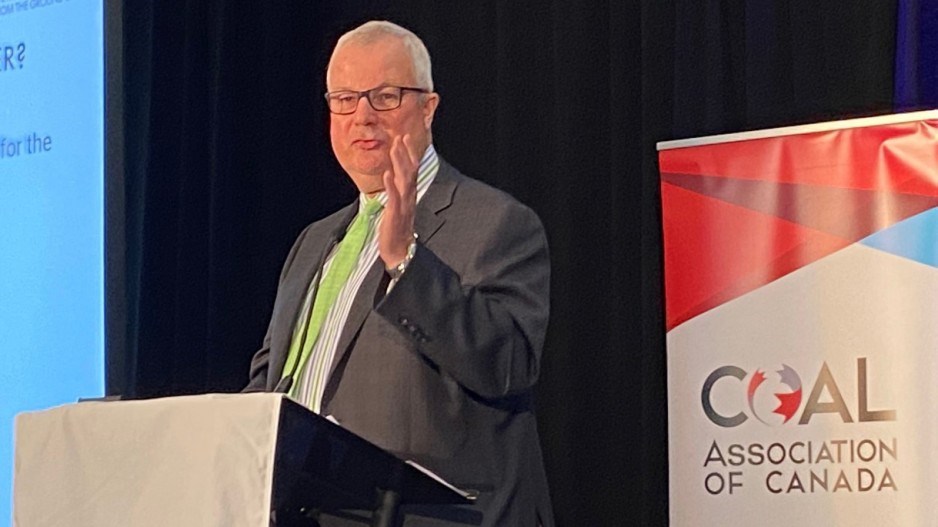Over the last year and a half, the renaissance of coal – both kinds – has been gobsmacking.
No one saw coal prices of US$400 to US$600 per tonne coming, including those in the coal industry.
“If, a year ago, fifteen months ago, you had said to people thermal coal could be $440, and coking coal could be $600, they’d call the ambulance and recommend a nice doctor,” Neil Bristow, managing director of H&W worldwide Consulting, said Thursday at day two of a three-day Coal Association of Canada conference.” Who would believe it?”
While Russia’s invasion of Ukraine has roiled energy markets and driven up coal prices, the reality is that thermal coal prices had been surging months before the invasion, as Europe was already in a self-induced energy shortage and resorting back to coal power.
Five or six years ago, thermal coal sold for about US$60 to US$80 per tonne, Bristow said. Even before Russia invaded Ukraine, thermal coal prices had soared to around US$200 per tonne.
“The fundamentals that caused those prices to increase in Q3 and Q4 of 2021 are still there, and they’ve only been exacerbated by the sanctions on Russian coal,” said Ernie Thrasher, CEO of Xcoal Energy and Resources.
Never in Bristow's lifetime has he seen thermal coal (burned to produce power) worth more than metallurgical coal, which is used to make steel, but it is now.
Metallurgical coal (also called coking or steelmaking coal) briefly touched US$600 per tonne, Bristow said, but has since settled down to about US$270 per tonne. That’s still a high price, but less than thermal coal at the moment, which is well above US$300 per tonne.
The usual market forces of supply and demand that would normally see producers responding to high prices with increased production simply isn't happening with coal.
In the U.S., the coal mining industry is half the size it was a couple of decades ago, and simply can’t suddenly reverse coarse. Australia’s coal production peaked in 2016 and it seems unlikely it can respond to the sudden demand for thermal coal either. B.C. is a major producer and exporter of metallurgical coal, but Canada exports little if any thermal coal.
Xcoal estimates the UK and Europe alone will need to find 47 million tonnes of coal that used to come from Russia. It’s unlikely to come from the U.S.
“There’s just not much the U.S. can do,” Thrasher said. “We’ve basically dismembered our coal industry."
Even if American coal mines could increase production, there is limited coal terminal capacity for exports, which is why coal produced in Montana and Wyoming is shipped through B.C. export terminals. And right now, one of those terminals -- Westshore -- has been paralyzed by a strike.
“There is just no elasticity in the supply chain that’s allowing people to respond to these prices, and the old adage of the best thing for high prices is high prices is not holding true," Thrasher said.
In total, Xcoal estimates the global coal supply gap at 96 million tonnes.
“These high coal prices are occurring at a time when the Chinese economy is just dead flat on its back,” Thrasher added. If China’s economy were to suddenly recover and grow, that would put even more pressure on both thermal and coking coal prices.
“Who can supply 96 million tonnes to fill that gap?" Thrasher wondered. "It’s probably only China and India. There’s just not a lot of other countries in the world where there’s the ability to produce the coal that needs to fill this gap.”
As for steelmaking coal, which is B.C.'s second most valuable export, a global recession might cool demand and temper prices somewhat. But Bristow predicts prices will remain high over the next few years, as there simply not enough new metallurgical coal mines being built.
“My models do not show enough coking coal to meet the demand in the world after about 2027, 2028,” Bristow said. “We desperately need new mines.”
“I’m going to be bold and say it will not stay $400 or $500 a tonne for very long,” Thrasher said of coking coal prices. “But I think the days of seeing sub-125, 150 dollars per metric tonne of coking coal for any period of time are in the rear-view mirror, and it’s because the coal simply is not being produced.”
Thrasher said he can envision stagflation resulting from the shortage of coal, if there is a global recession.
“If we get into a major global economic slowdown, it certainly is going to put a damper on our products,” Thrasher said. “The question is, if you go back and look at those supply shortfalls, will a 5% global economic slowdown be enough to solve the problem if you’re 10% short in energy supply? You basically have a stagflation environment where the global economy is crashing but you still need energy and the energy prices stay high.
“It will affect thermal more than coking coal. It could be something we haven’t seen in 40 or 50 years.”




